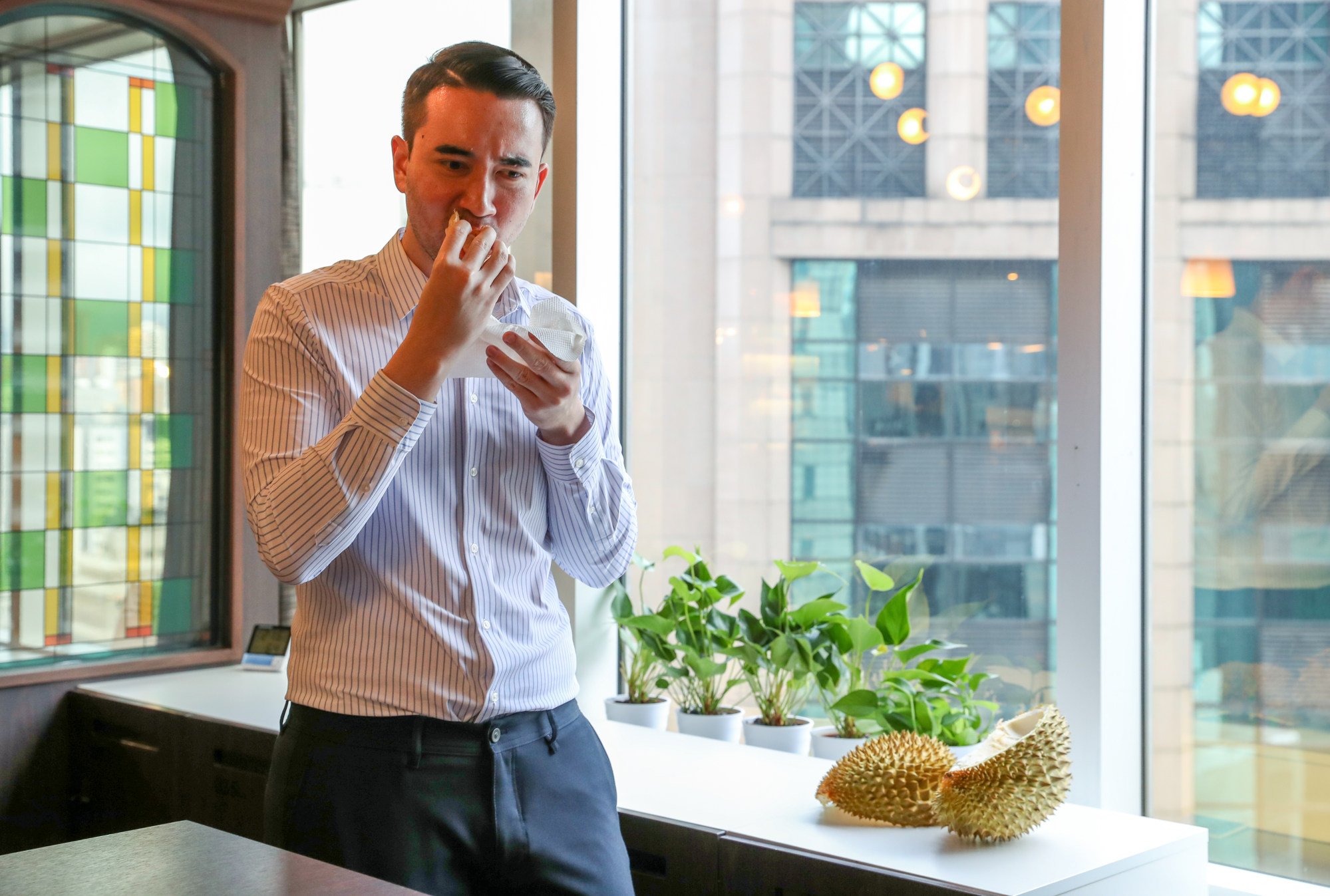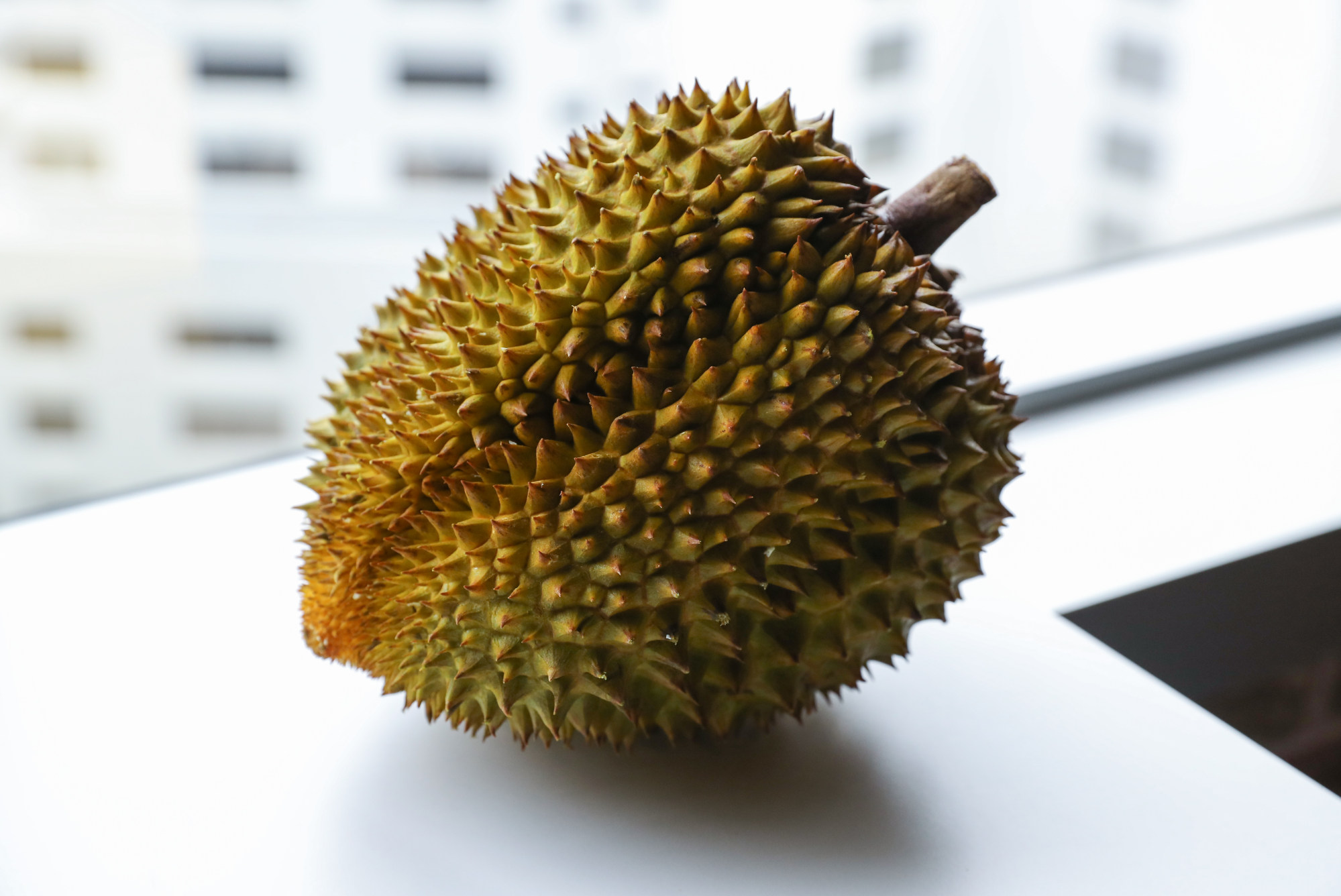
Review | How does China’s first home-grown durian taste? Not great, the Post finds out
- China’s much-anticipated first major durian harvest recently took place and the Post’s Shea Driscoll managed to get his hands on one of the spiky fruits
- But the taste and smell were just a faint facsimile of a ‘proper’ durian, while the texture was more reminiscent of an unripe banana at times
Just like durian, I am a tropical native and spiky on the outside.
That, and the fact that I am an avowed fan of the divisive fruit, made me the perfect person to try one from China’s much-anticipated first major durian harvest, which took place in Hainan province.
I had limited expectations; I did not expect the oozing, creamy, bitter goodness of a Musang King (Mao Shan Wang), one of the most prized varieties of durian.

After a colleague demonstrated the niche yet underrated skill of opening an intact durian with just a tiny pair of scissors – I was also told it is possible using only a single chopstick – what emerged from the hefty, 4kg (8.8lb) durian was disappointing.
First, the smell. Durians smell so strong that they’re banned from public transport in several places, even in sunny Singapore, where the fruit is generally beloved. Love them or hate them, there is no doubting that a durian’s scent travels.
However, no one even seemed to notice that this one was lying open in one of the Post’s social hubs. You had to get surprisingly close to even catch a whiff of the fruit’s infamous smell.
How durian became the coveted gift for girlfriends, future in-laws in China
The colour of the meat was similarly underwhelming: a pale yellow that was far from the deep golden hue you can sometimes get.
How did it taste? “Weak” was the scathing assessment from one curious onlooker who gave it a try.
Indeed, it tasted as mild as it smelled. While proper durian overwhelms the palate, this was but a faint facsimile – more of a reminder of what durian tastes like rather than a proper dose.
The consensus was that it was dry, hard and just too mild
Texture-wise, there was little of the creaminess of proper durian, with our fruit more reminiscent of an unripe banana at times.
In many ways, this felt like Durian 0.5 – a prototype of a proper durian that needed more development time to get the smell, texture and flavour right.
Other testers were also not kind.
“It tastes like nothing,” was one blistering evaluation. The consensus was that it was dry, hard and just too mild.

But there is a flip side to this coin. One mainland Chinese colleague said he did not mind that the flavour was less intense because “then you could eat it every day”.
Did we get a dud durian? Was the fruit perhaps not ripe enough? We will not condemn the entire batch, but from the evidence presented, Malaysian and Thai durians have little to worry about.

